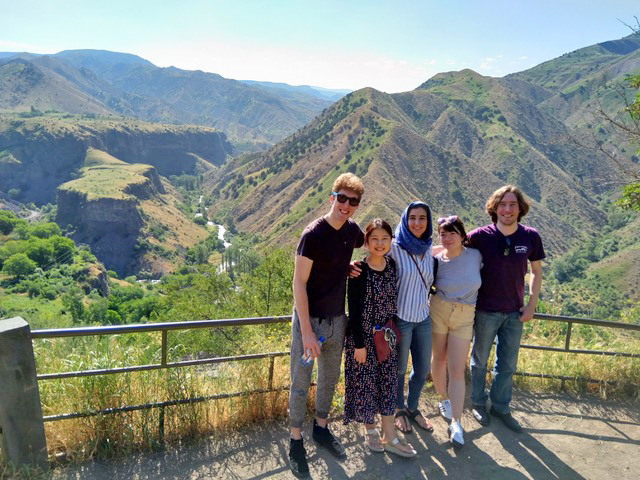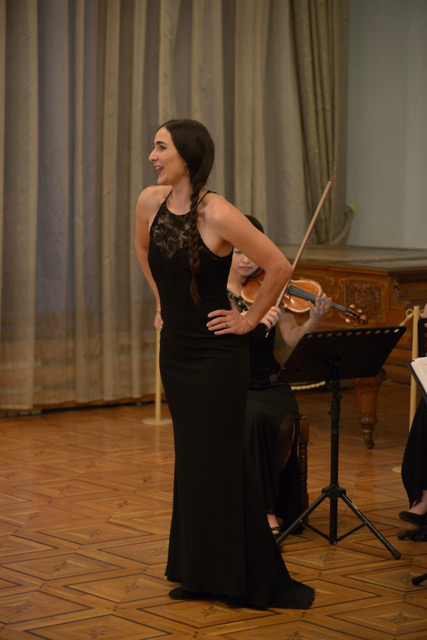By Néstor Castiglione
LOS ANGELES and YEREVAN — Arriving at the airport, exhausted and cramped after a 21-hour flight with more turbulence than my admittedly timid sensibilities could handle, I quickly made my way to the nearest bathroom in order to take a breath for a moment, and maybe splash some water through my hair. As I leaned over the sink and gratefully rinsed my face under the cool running water, my ears suddenly took notice of the faint strains of a familiar tune wafting from outside. Drying myself off, I stood there silent for a moment trying to pick the musical thread out from the tapestry of bustling noise in which it was threaded. What was it? Picking up my bags I headed out to customs, hoping to get a better hearing of the music. As I stood in line, against a controlled din of public announcements blaring overhead and the constant stamping of passports by customs agents, the music finally revealed itself: It was the Waltz from Aram Khachaturian’s Masquerade, soon followed by the Adagio from Spartacus.
It was nearly 2 a.m. when I finally made it through Zvartnots Airport. Welcome to Armenia.
Music is practically ubiquitous wherever one walks in Yerevan. Street performers with their duduk and k’anon interspersing folk melodies with arrangements of Khachaturian and Babadjanian, melismatic pop songs blaring out from passing Moskvitches, simple nursery songs from playing children. In the world of classical music, nations like Germany, France, Austria, Russia, and Italy are for general audiences virtually synonymous with the genre. Armenia, despite its size and population, not only swings an oversized fist in the annals of classical music — bequeathing countless composers, instrumentalists, singers, and musicologists — but makes a convincing argument that it, too, ought to be recognized as one of those nations who have made a sizable and distinguished contribution to music.
“We are caught between Europe and Asia,” Artur Avanesov, arguably the most talented of today’s young Armenian composers, told me over dinner in Yerevan last month. Amidst the merrymaking and the glasses clinking from our fellow guests, he continued: “I think our love of music is both a survival tactic and coping mechanism. In this part of the world, Armenia sought protection, escape by aligning itself with European culture.”
Yet its cultural achievements, while a well-known source of national pride to Armenians, remains underappreciated internationally. But a pioneering program at UCLA Herb Alpert School of Music is working on changing that.











